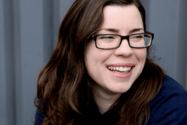Only Half the Battle
The true mission of translational science is to take new medicines and diagnostics from bench to bedside – and beyond
In February 2016, the WHO declared the Zika virus a global health emergency. As scientists, our thoughts immediately turn to the development of rapid diagnostics, an understanding of the link to microcephaly, and the search for a vaccine. Sanofi, who recently saw approval of its Dengue vaccine in Brazil after a 20-year, $1.5 billion development journey, believe its experience will speed efforts to prevent Zika, while several small biotechs and the NIAID are also testing candidate vaccines.
And yet, as we learnt in “The Missing Link” in last month’s issue (1), better diagnostics and medicines are just one part of the puzzle. It’s no coincidence that north-eastern Brazil – the epicenter of the outbreak – is the poorest and least developed part of the country. Families in houses with no running water must store their own; water tanks (and puddles of rainwater in uncollected rubbish) are perfect breeding grounds for Zika’s vector, Aedes aegypti – also known as the yellow fever mosquito. After being virtually wiped out in Brazil during the 1950s, Aedes aegypti has gradually recolonized the nation, bringing with it a range of diseases, including Dengue – and now Zika.
Certainly, a vaccine would be a great advance. But even if Zika is eradicated, without understanding and addressing the full range of factors contributing to the outbreak, we will be no better placed to combat the next emerging disease. Looking at the much bigger picture, Zika is not even the most serious threat to maternal and fetal health in Latin America – or elsewhere... Nevertheless, governments have called for women to “avoid becoming pregnant” during the outbreak; however, a complex blend of social, cultural and economic factors determine whether women have access to contraception or the desire/ability to prevent pregnancy.
It’s natural for scientists to seek scientific solutions, and for all human beings to want a straightforward narrative: “Scientists find the cure!” But as Michael Liebman points out in “Asking the Ultimate Question”, new and better technology is not always the answer. We must also ask bigger and bolder questions. How can we reduce the burden of neglected tropical diseases? How can we improve outcomes for mothers and babies around the world?
The Translational Scientist’s “In Perspective” section focuses on improving healthcare at the population level. The true path to translation lies not only in finding scientific solutions to the problems that threaten our health, but also addressing the barriers that prevent advances being applied where they are most needed.

Charlotte Barker
Editor
- H Lambert, “The Missing Link”, The Translational Scientist 1, 46–48 (2016).

“As Editor of The Translational Scientist, I’m working closely with our audience to create vibrant, engaging content that reflects the hard work and passion that goes into bringing new medicines to market. I got my start in biomedical publishing as a commissioning editor for healthcare journals and have spent my career covering everything from early-stage research to clinical medicine, so I know my way around. And I can’t think of a more interesting, challenging or important area to be working in.”















